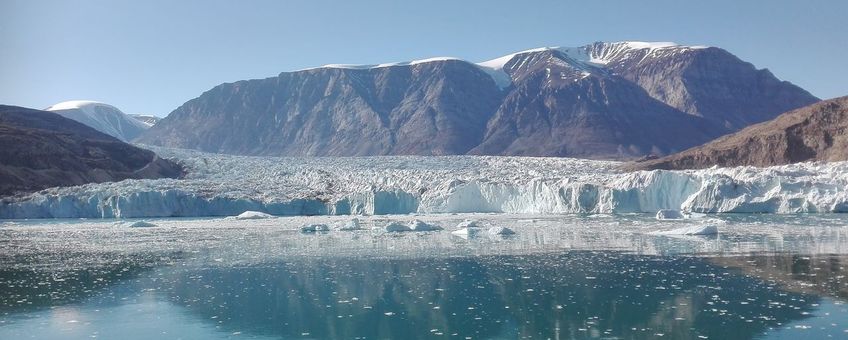
Melting of Greenland glaciers changes coastal ecosystem
NIOZ Royal Netherlands Institute for Sea ResearchGreenland is home to several hundreds of fjords, where many glaciers terminate that extend from the Greenland Ice Sheet, a two to three kilometers thick reservoir of fresh water. Each summer, a certain amount of glacier ice melts and fresh water runs into the Atlantic Ocean. Geochemist Alice Stuart-Lee from the NIOZ Royal Netherlands Institute for Sea Research and Utrecht University: “The polar regions are changing so much faster than the rest of the world due to climate change, an alarming process called arctic amplification. Because of this, glaciers are retreating.”
Infatuated with ice
In her research, Stuart-Lee wanted to compare glaciers marine-terminating glaciers –that end in the sea, with land-terminating glaciers – to link the influence of different glacier types to the physical processes in each fjord and to its ecology. During seven field trips, coordinated by the Greenland Institute of Natural Resources, she compared two fjords in Southwest Greenland near the capital city of Nuuk. She enjoyed sailing along frozen land- and seascapes. Stuart-Lee: “Personally, I am infatuated with ice and with cold regions. I never get tired of looking at icebergs.”
Change in foodweb and impacts on fisheries
The fjords Stuart-Lee studied were Ameralik – with a land-terminating glacier – and Nuup Kangerlua, with predominantly marine-terminating glaciers. “We found that the land-terminating glacier fjord was a dynamic environment, rich in life, but with a strong contrast in food web structure to the marine-terminating glacier fjord. In the fjord with a land-terminating glacier, we found fewer and smaller algae and other phytoplankton, smaller zooplankton, and more cyanobacteria.” According to Stuart-Lee, soon, this may lead to big changes in the food web that affect local fisheries. “This is potentially a great threat to a country that is very much dependent on certain fish like halibut and cod.”


A tale of many fjords
Stuart-Lee’s supervisor Lorenz Meire is a researcher at the Estuarine and Delta Systems department of NIOZ in Yerseke, of which the impact of climate change on marine coastal ecosystems is an important scientific focus area. He aims to understand the consequences of interactions between oceans and glaciers in Greenland. Meire: “In her research, Alice proves that glacier melting definitely has its impact on the physical oceanography and carbon cycling of Greenland fjord systems.”
The dissertation, titled ‘A tale of two fjords’, is probably the tale of many Greenland fjords. Stuart-Lee: “The results from these two glaciers give general implications for the changing coastal ecology of about 200 glaciers in Greenland. Because many glaciers that now terminate in the ocean, may terminate on land over the coming century.”
More information
- The disseration 'A tale of two fjords: The role of glaciers in the hydrographical, biogeochemical and ecological functioning of two fjords in southwest Greenland' can be downloaded at Utrecht University Libraby.
Text: NIOZ
Photo's: Lorenz Meire (lead photo: Greenland glacier); Alice Stuart Lee
